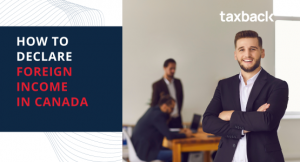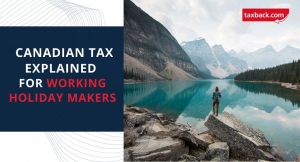10 things to do on your first week in Canada
From finding accommodation to getting a job – top tips for getting set up on your first week in Canada
A working holiday in Canada is a fantastic opportunity to experience life and work in a new country.
But when you have an arm-length checklist of things you need to do when you arrive, it’s easy to get stressed about the move.
Don’t worry, we’ve got you covered!
Here are 10 things to do on your first week in Canada that will help you to settle in.
The average Canadian tax refund is $998
1) Find accommodation

First things first.
You’ll need a roof over your head. It’s likely you’ll stay in temporary accommodation – like Airbnb and hostels – when you first arrive in Canada. But it’s definitely a good idea to start researching, on your first week, where you’re going to stay over the long term.
Searching online is a quick way to find rentals and websites such as www.rentboard.ca and www.apartmentscanada.com should come in very handy. It’s a good idea to bring references from previous landlords you’ve had at home if you have them.
Be aware though, the cost of renting can vary greatly from city-to-city.
Depending on where you go, you may end up paying anything from $600 to $3000 for a one-bedroom apartment, so it’s worth doing some homework on what it will cost you to live in your chosen area!
Whistler & Banff
Both Whistler and Banff are currently experiencing somewhat of a housing crisis. If you’re not lucky enough to have accommodation you might have to pay anything from $1,650 for a one bedroom in the village. It’s best to do your research and keep an eye on pages such as this one before you move out there.
2) Get your SIN

Want to get a job in Canada?
You’ll need a Social Insurance Number (SIN).
A SIN is a nine-digit number (starting with 9) and you can apply for it in any Service Canada office.
When you are making your application, you will need to have an original (photocopies not accepted) primary document that proves your identity and status in Canada.
The below are examples of acceptable primary documents which temporary residents (such as working holidaymakers) can use in their applications.
- Canadian Work permit
- Study permit, indicating that you are authorized to work in Canada:
- a study permit that indicates the permit holder ‘may accept employment’ or ‘may work’ in Canada;
or
- a study permit and a ‘confirmation to work off campus’ letter issued prior to February 11, 2015.
*If neither of these requirements is met, you must contact Refugees and Citizenship Canada (IRCC) to verify if you are eligible to apply for an amended study permit
- Visitor record, indicating you are authorized to work in Canada.
- Diplomatic identity card and a note of permission of employment issued by Global Affairs Canada
If everything is in order, you will get your SIN during your visit to the office and you will not need to part with any of your documents.
Translation requirements
If you submit a document that is not in English or French, you will also need to have:
- an English or French translation of the document; and
- an attestation (by a certified translator) or affidavit (by a translator who is not certified) written and signed by the translator
It’s important to note that translations by family members are not accepted.
Applying by mail
If you can’t visit the office in person, you may be able to apply by mail.
This option is open to you if you:
- are living 100 km or more away from the nearest Service Canada office, in an inaccessible area or where outreach is very infrequent
- have other extenuating limitations that prevent you from visiting a Service Canada office and who can’t use the assistance of another individual to submit an application on your behalf
- are applying from outside Canada
If you are applying by mail you’ll need to send a completed SIN application form along with the required original documents. If your SIN application meets the requirements, you will receive a letter with your SIN by mail within 20 business days from the date the application is received.
The address to send your completed form is:
Service Canada
Social Insurance Registration Office
PO Box 7000
Bathurst, New Brunswick E2A 4T1
Canada
Free Guide to Work and Travel in Canada
3) The essentials!
Set up a bank account
The good news is that getting a bank account in Canada is pretty straight forward.
The bad news? Many banks have charges that may be higher than what you’re used to paying at home.
That being said, it’s still important to get an account set up so that you can manage bills and debit card payments and avoid potentially costly withdrawals from your home account.
Canadian banks usually have monthly fees associated with their chequing accounts (known as ‘current accounts’ in other countries) and the average Canadian spends roughly $220 in fees each year.
But by doing some research and shopping around, you can find the best offering for you.
Get a phone

You’ll start to feel more settled in Canada once you get your phone plan up and running!
The earlier you get a local phone, the more you’ll avoid nasty roaming charges from your home provider. And what’s more, if you’re on a two-year visa, and considering entering a two-year contract, it’s a good idea to align these as best you can.
Canadian mobile plans tend to be more expensive than European plans so you may end up paying more than you are used to. As of 2015, the average monthly cost of a mobile phone plan in Canada was $48.68.
Many Canadian phone companies offer discounted rates on phones if you commit to a one or two year contract. You should be aware that if your plan does not have unlimited calling then your monthly limit could be used for incoming calls as well as outgoing calls depending on your network.
You should be aware that many of the cheaper mobile phone plans don’t include long-distance calls, even within Canada. This means if you want to call outside your city, you may incur big charges. Although, when you first move over you’re likely to be on the job hunt in the local area so it’s probably a good idea to sign up to a mobile phone plan with data and unlimited texting and calling – at least for local calls. This will help you to network and get on the job hunt.
Finally, many mobile phone plans include international calling or texting in the cost, so you can keep in touch with home. If it’s not included in an offer you’re interested in, you may be able to get it included as a cheap add-on.
Transfer your driving licence
The rules for getting a Canadian driving licence differ depending on which province you are in.
It can be easier to get one if you already have a licence in your home country. Canada has reciprocal agreements with USA, Ireland and the Commonwealth countries (England, Scotland, Wales, Northern Ireland, Australia, and South Africa) whereby residents of these countries can simply transfer their license – often without the need to sit a test. A number of provinces also have individual agreements in place with various countries. It’s a good idea to examine your country’s relationship with Canada regarding driving licences before you arrive.
Finally, you should bring a copy of your driving history from home before you go to Canada. This document is important in many provinces for determining your driving experience and will make getting a driver’s license in Canada much easier.
4) Lay of the land
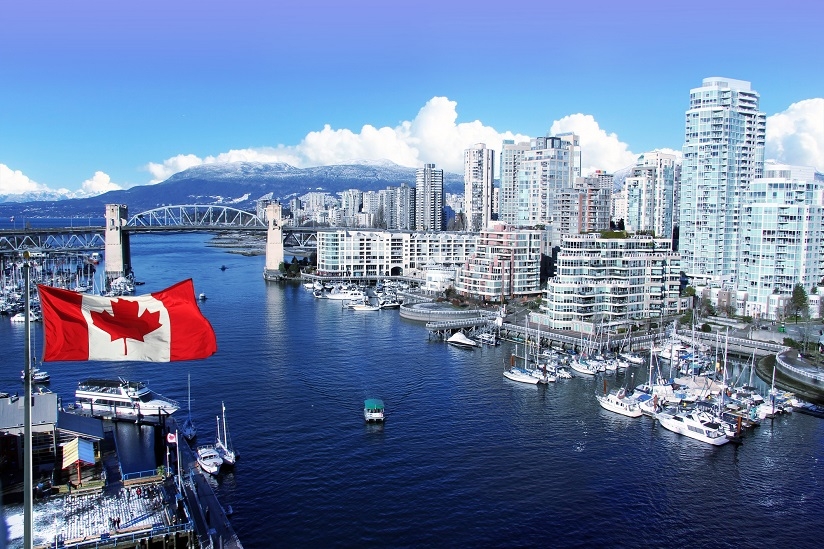
Don’t let the stress of your big move spoil your first week in Canada!
After all you’d been dreaming of your trip for ages, right?
It’s important to start exploring as soon as you arrive in Canada. Why? Well, the sooner you get out and about, the sooner your new destination will start to feel like home.
Go on a stroll around the local area. Find the nicest bars and restaurants to enjoy nearby. Where is the local supermarket and cinema? Immerse yourself in the area!
5) Make new friends
You’ve just travelled half way around the world. What a perfect opportunity to meet new people and make friends. Once you develop a solid network of good friends and acquaintances you should start to feel right at home.
It’s always easier to make friends with people who have similar interests to you. Join classes or clubs that you think you’d enjoy. Or locate other working holidaymakers in your area – no matter where you are it’s unlikely that there will be a shortage!
There are also a large number of Facebook groups for working holidaymakers where you can find friends, introduce yourself and say hello.
6) Get a job
You’re probably going to be eager to start your job hunt when you arrive in Canada. But there’s some important things to do before you start submitting applications.
The first thing you should do is bring your CV in line with the résumé style preferred in Canada. If you’d like help with this, the Irish Canadian Immigration Centre in Toronto runs weekly courses on résumé style.
Your resume format should contain (in order):
- Contact information
- Professional / career summary
- Work experience
- Education / professional development
You can also add (where appropriate):
- Technical skills
- Volunteer experience / community involvement
So what kind of jobs can you get in Canada?

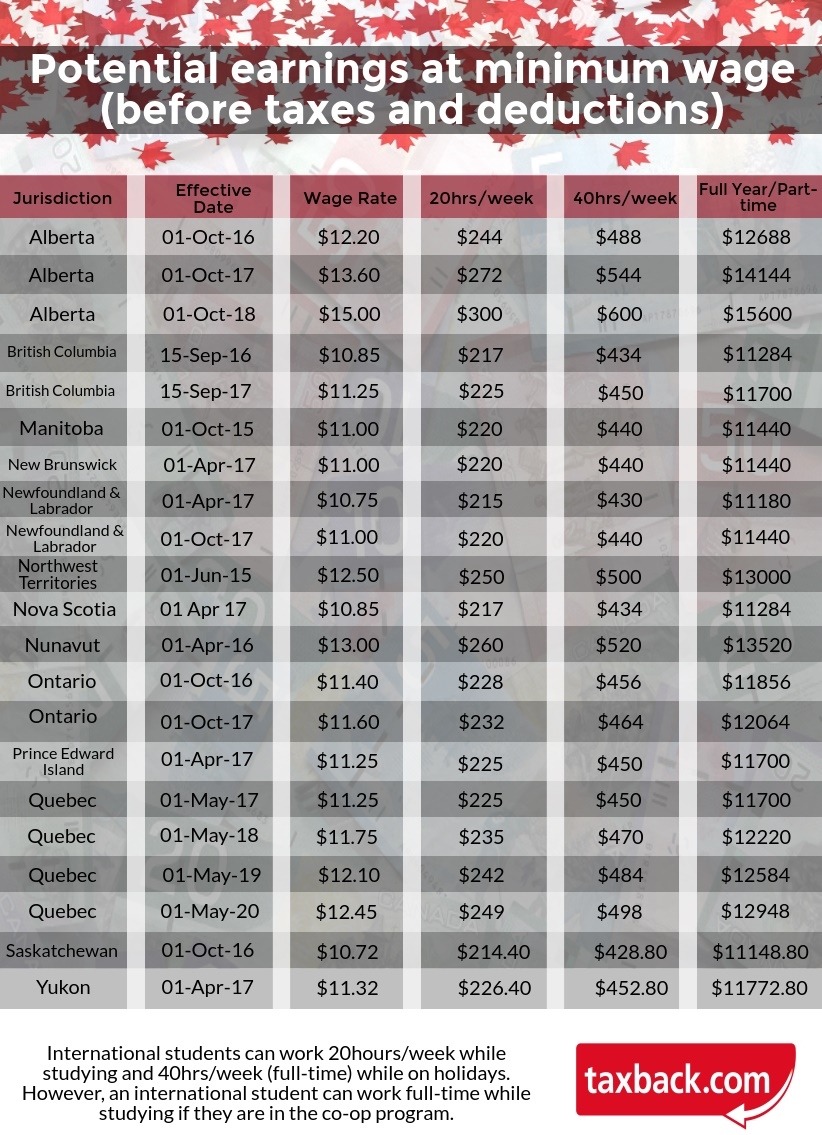
This largely depends on the part of the country where you’re setting up camp.
All of the major cities offer employment opportunities in cafes, shops, bars, restaurants, offices and building sites. Although, if you are looking to work in a specific industry, you should choose your location carefully.
If you’re interested in working in finance or accounting, Toronto would be a good choice for you. You should consider Vancouver if roles in trading, logistics and shipping sound appealing. Career opportunities are available in Montreal in Electronics, Software and Manufacturing amongst others. Ottawa is a good choice if you’re a computer whizz as various positions in IT are available. Or, if you’d like to get your hands dirty, there are numerous jobs in the oil and gas industry on offer in Calgary and Edmonton.
Thousands of working holidaymakers choose Canada in pursuit of their dream to work on the slopes.
Most large Canadian ski resorts are located in British Columbia and Alberta. In BC, the main resort is Whistler. In Alberta, there are three main resorts located around the beautiful town of Banff; Sunshine Village, Norquay and Lake Louise.
Typical jobs in a Ski resort include:
- Lift operator
- Ski instructor
- Bar person
- Retail assistant
- Ski/Board technician in a rental shop
- Local guide
The vast majority of jobs available in the ski resorts will be casual and seasonal in nature. Hiring usually starts in October so it’s important to get there early. That said, you may not start work until late November or early December – commencement dates will depend on when the snow starts falling and tourists begin to arrive.
If working on the slopes sounds appealing to you there are a number of career fairs – such as in BC with the Whistler Blackcomb job fairs which take place in October and the Gibbons Group offering in November.
No matter what part of Canada you are looking for work, job fairs are always a great opportunity to network and get your foot in the door with potential employers.
The average Canadian tax refund is $998
7) Get your ski pass
If you find a job in a ski resort, don’t expect your wages to be sky-high. But you may be able to enjoy some perks. Lots of jobs offer staff housing at a subsidised rate, as well as food and gear in some cases. And many employers will cover a portion, or the entire cost, of your all-important season ski pass.
This should not be underestimated.
Season ski passes can be expensive – often $1,000 - $2,000 – so it’s definitely worth discussing whether this perk is included in any job offer you receive.
Soon you’ll be skiing your heart out!
8) Get your gear
Aside from ski passes, ski and snow gear can also be very expensive.
But by making a few smart moves you can minimize your costs and enjoy the mountain without spending every penny you have.
The first thing to do is to purchase your own gear instead of renting everything. Renting gear for the day can cost between $100-$200 a day but most people can purchase what they need for less than $300 - as long as you’re happy to buy your gear second hand.
Websites such as craigslist can be very helpful for finding what you need for the slopes at cheap prices. Be sure also to look for garage and car boot sales and to check out Facebook groups to find good value.
9) Get to know your tax forms and requirements
The Canadian tax system is likely to be considerably different to what you are used to at home. So while tax is not the most appealing thing you’ll think about on your working holiday, it’s definitely a good idea to become familiar with the Canadian tax system as soon as you can.
TD1 form
When you start a new job in Canada, your employer will ask you to fill out some tax forms. The forms in question are called Federal and Provincial personal tax credit forms. Employers use these forms to determine the amount of tax to be deducted from your employment income.
TD1 (2017) is the federal form.
However, the provincial form that you fill out will depend on what province you are working in:
- TD1BC – British Columbia (2017)
- TD1AB – Alberta (2017)
- TD1ON – Ontario (2017)
- TD1SK – Saskatchewan (2017)
- TD1MB – Manitoba (2017)
- TD1NU – Nunavut (2017)
- Quebec – Form TP-1015.3-V, Source Deductions Return
You will need to complete this form if you:
- have a new employer or payer;
- want to change amounts from previous claimed tax years;
- want to claim the deduction for living in a prescribed zone; or
- want to increase the amount of tax deducted at source
The most common reason for filling out this form is when you change employers, or start first-time employment in Canada. Filling out a TD1 form is not too difficult. Although you may find it confusing if one of the following applies to you.
A) You worked in another country in the same year that you came to Canada
If you earned income from another country in the same year that you earned income in Canada, you may not be eligible to claim the personal tax credits allowing you to earn income tax free in your job in Canada.
This is when the 90/10 rule comes to play. If you will earn 90% of that year’s income in Canada, then you can claim it. But if your foreign income was quite significant, and you don’t think you will make enough to dwarf that amount, you will not be eligible to claim the personal tax credits on the TD1 federal or provincial. In this case you should enter 0 in box 13.
B) I’m working more than 1 job at the same time
If you’re working more than 1 job at a time you’ll have to be careful that you aren’t claiming your credits twice. You should only claim the personal tax credits once, and it’s likely that it will be most beneficial to use this for the job that you earn the most money in. If you discover that you’ve claimed the credits twice, you should fill out the forms again.
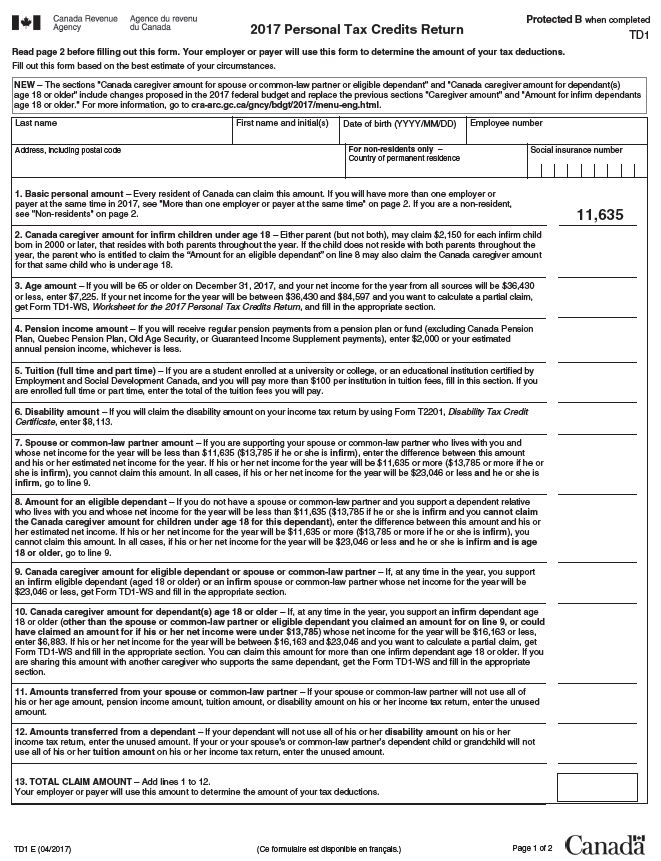
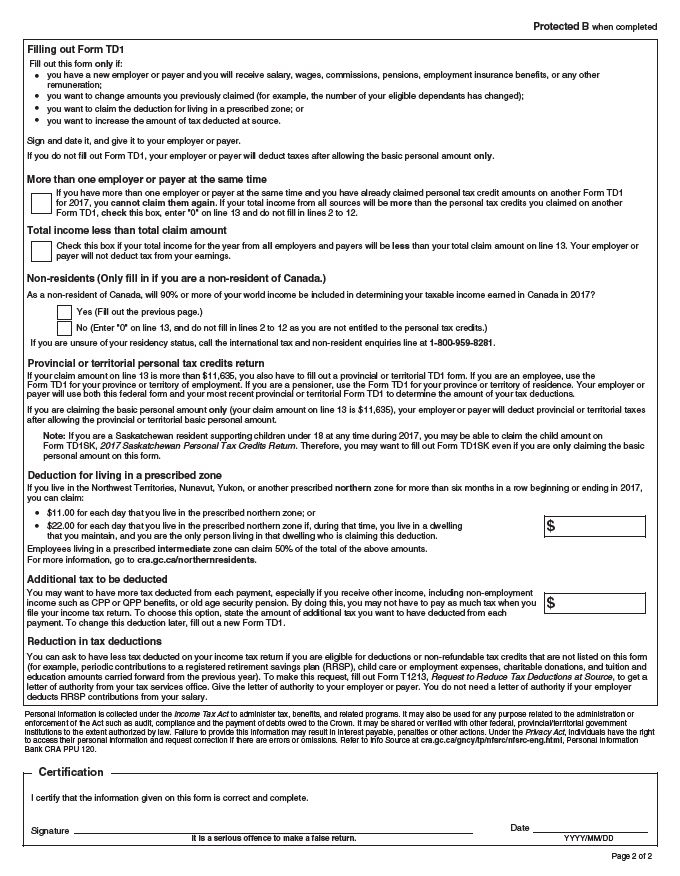
T4 form
After the end of the tax year (usually in February), your employer will issue your T4. This is a statement of earnings for the previous year and shows how much tax you paid.
You can use this statement to help apply for a tax refund. How much you get back will depend on a number of factors, such as:
- Your residency status
- How long you worked
- How many jobs you had
- Income you received from overseas
- How much tax you paid
- If a tax treaty is applicable
Getting a refund
The Canadian tax year is from January 1 to December 31, but you can't apply for a tax refund until March 1 of the following year.
If you’re working in Canada temporarily, you’re legally obliged to file a tax return. You should submit it by April 30 but you can apply for your refund from March. To file your tax return, you’ll need a T4 or final cumulative payslip.
Taxback.com can help you to file your tax return.
We will ensure that you avail of every tax deduction that you are entitled to, file your tax return for you, retrieve your maximum legal canada tax refund and make sure you remain compliant with your visa conditions.
And if you leave Canada without applying for a tax refund, don’t worry, you have up to 10 years to claim it. Plus Taxback.com can transfer your refund to anywhere in the world!
Use our free income tax calculator today so find out how much Canadian tax you could be owed back!
The average Canadian tax refund is $998
10) Have fun!

The most important thing to do on your first week in Canada is have fun! You’ve arrived safely, now start exploring. While there’s lots to do to set yourself up, be sure to plan at least one thing every day that you will enjoy. After all, it’s called a working HOLIDAY!
Do some touristy stuff. Go to the top of the CN Tower. Challenge yourself to the Grouse Grind. Or go wildlife spotting – keep a safe distance from bears though!
Free Guide to Work and Travel in Canada
